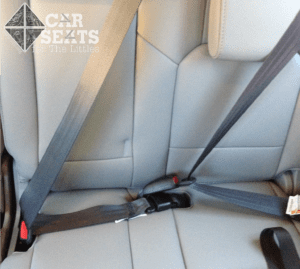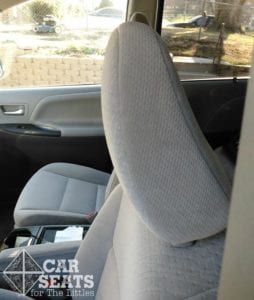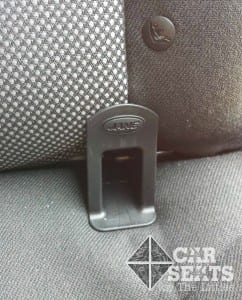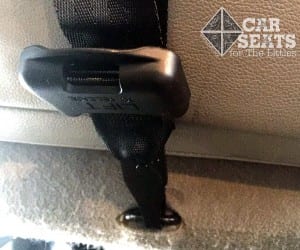Vehicle shopping is a daunting task. Many times, the sales staff descends upon you as soon as you enter the lot. If you need to quickly replace a vehicle, shopping can be even more stressful. If you are not in a time crunch, you have more time to weigh options. Two of the last three times we’ve chosen a new vehicle, we didn’t have the luxury of time. As a family of seven, any old vehicle won’t do and when our main vehicle died a painful, unexpected death, we were suddenly living in a world of hurt.
Whether you have two weeks or two hours to make the decision, here are some things to keep in mind when choosing a new vehicle.
Things to Consider
- Make a list of features that are important to you: price, leather, heated mirrors, heated seats, Sirius radio, DVD player, inflatable seat belts, etc.
- Make a list of features you need: number of seats, shoulder belts, head rests, tether anchors, storage, etc.
- Take into consideration possible family growth/expansion- are you planning on having more children? Carpooling for school?
Making a chart of possible seating locations for all children can be helpful. Where will the kids sit now? Two years in the future? Then two years after that? Do your children have only one spot they can sit in or are there multiple seating positions that work? - Talk to a CPST to help figure out what you will need for tether anchors or lower anchors. All forward facing harnessed seats should be tethered for optimum safety, so considering tether locations is essential when shopping for a family vehicle.
- Research vehicles on IIHS for safety ratings.
- Test car seats in the vehicle: this is especially important for rear facing car seats and when car seats need to be side by side.
Starting to Shop
Once you have lists of your wants and needs, visit the car lot. Do not be afraid to tell sales people you are merely looking and not purchasing yet. Also let them know you want to install your car seats in the vehicles they show you.
Many sales people will accommodate these types of requests. If they don’t, find another dealership. Needs for a vehicle will vary greatly family to family and it takes time to find one that fits.
Pro tip: don’t get hung up on one vehicle type. When our van died, we automatically went looking for a new van. However, we found that there were several SUVs that fit our family needs well instead.
Features to Consider
Head Restraints
Any adult or booster rider that uses a backless booster needs to have head support to the tops of their ears. Make sure all seating positions have a head restraint that is high enough. In new vehicles, these restraints are generally designed to provide optimum protection for those not using a child restraint.
The design can then make installing a child restraint, including high back boosters, difficult or impossible. It’s very important to both try your car seats in the vehicle before you buy and read the child restraint manual to see if the car seat needs to be flush with the vehicle seat. Check the vehicle’s manual to see if the head restraints are removable.
Inflatable Seat Belts

Inflatable seat belts are labeled and will be thicker than a regular seat belt making them easier to spot.
Some model year 2011 and newer Ford and Lincoln vehicles, as well as some models of Mercedes have inflatable seat belt. This feature can be tricky for car seats. Currently, only a few seats and boosters are approved for installation with the inflatable belts. A car with this feature limits your choices in terms of where car seats can be safely installed. For some seats you can avoid the issue by using lower anchors for installation but be mindful of lower anchor weight limits on your child’s car seat.
Vehicle Interior
Leather Seats vs. Cloth Seats
Know your car seat’s rules on seat protectors and what, if anything, is allowed under your car seat. Also know how to care for and protect whatever interior you choose. While shopping you might ask the dealership if they offer any upholstery protection options.
Lower Anchors
Check the vehicle’s seat bight for lower anchors. Are they easily accessible? Do you prefer lower anchor installation? Are there enough lower anchors for your needs? Sometimes the lower anchors on a car are buried deep into the seat bight, making them difficult to find and use. Some car seats have lower anchors guides available to help with this situation, see which type your potential vehicle has and decide if that setup works for your family.
Backseat Configuration
Middle Seat Hump
Sometimes the middle seat in the back comes with a significant hump. This can make installing a car seat in this position difficult or impossible. A hump in the middle floor position can also make a seat with a load foot incompatible with that position as well. However, a back seat with a hump in the middle may be an option for a child who only passes the Five Step Test on slightly higher seats.
Overlapping Seat Belts

The vehicle seat belts overlap each other. This setup is unsafe for two passengers to be in these positions simultaneously.
Some vehicles have overlapping belts that make installation of three car seats impossible; in some cases using all three seats for child restraints will be prohibited by the vehicle’s own manual. Overlapping belts can be found in many sedans and even SUVs. Keep this in mind when planning your seating chart; overlapping belts can make a vehicle with five seat belts functionally a four passenger vehicle.
Shoulder Belts

This seat belt in the Dodge Caravan does not come into contact with this child’s shoulder making it a dangerous belt fit.
All vehicle occupants who are booster age and above need a shoulder belt. Lap only belts can only be used for harnessed seats, and for forward facing harnessed seats that position will also need a tether anchor. Lap only belts can never be used with boosters and should not be used by adults or children who pass the five step test. Be sure the shoulder belts are designed to fit properly. Some vehicle belts are so far forward that they cannot safely restrain any passenger, though they may work for some high back boosters or harnessed car seats.
Side Bolsters
These are tricky little things that can really impede car seat installation, especially if you need to fit three across. A back seat may measure big enough to fit several car seats side by side, but when figuring bolsters into the equation, you may lose many inches of room needed to install the car seats in the outboard positions. Again, installing car seats before purchasing is an important step in deciding what car will fit your family.
Storage
Vehicle storage is an important consideration, especially for growing families! See if they vehicle has enough room to safely stow groceries, your stroller, sports gear, luggage, and other items. If not, are you able to adjust your load to fit the vehicle?
Tether Anchor Locations
The tether anchor is the forward facing harnessed seat’s VIP (very important part). Check the vehicle to see if there are enough tether anchors for anyone who needs a harnessed seat. When it comes to tether anchors, the more the better. More anchors means more flexibility with seating positions. Many minivans only come equipped with three tether anchors total and more cannot be added. Check all seating positions and the vehicle manual to be sure that the vehicle has enough tether anchors for your situation.The Car Seat Lady has a fabulous guide to lower anchor postitions in a variety of current vehicle models that may help with decision making.
Tether Anchors in Older Vehicles
If you are purchasing a car that was made prior to 2001, ask about retrofitting tether anchors to add additional tether locations. While this used to be more commonplace, tether retrofit kits are becoming harder to find. Chevy vehicles in particular are almost impossible to retrofit so keep that in mind when purchasing an older vehicle.
Vehicle Size
Just because it’s an SUV or minivan doesn’t mean that it will be big enough to fit three car seats across one row or have enough storage for your needs. The same goes for full sized sedans. Whatever your specific seating needs, make sure the vehicle can do what you need it to.
Final Thoughts
Choosing a new to you vehicle is not easy to begin with, but it can quickly become overwhelming when child restraints are added into the mix. Planning ahead is your best defense, but we all know that’s not always possible. We hope that this guide will help with your next vehicle purchase, whether you have time to plan ahead or not.
Originally written by Jennifer Penick. Edits maintained by CSFTL.




